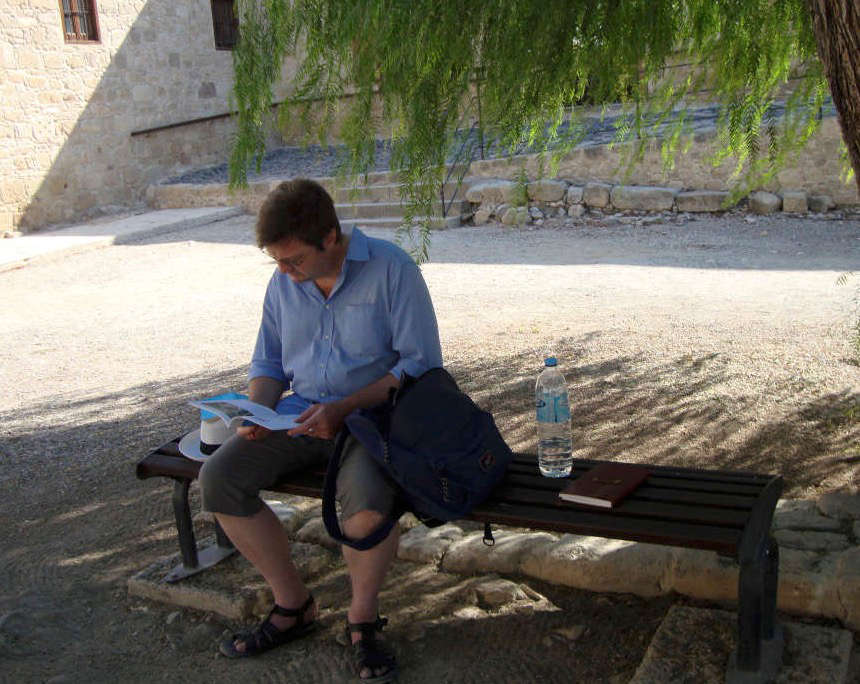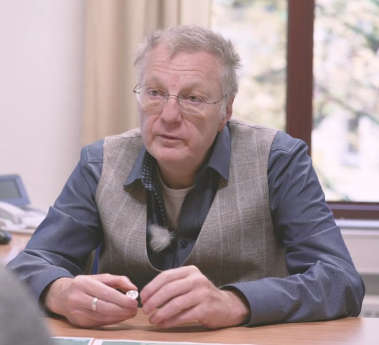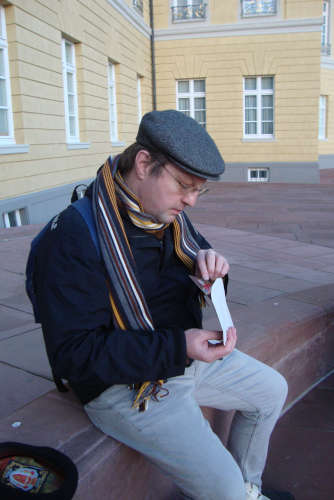Ulrich Werz (1964-2023)
by Claire Franklin
Ulrich Werz, who has died aged 59 after a long battle with cancer on June 14, 2023, was well known in numismatic circles in Germany, Switzerland, and beyond, particularly for his work on coin finds and Roman countermarks.
Born in Stuttgart in 1964, he studied Classical Archaeology and Pre- and early history at the Georg-August-Universität in Göttingen, and continued his studies at the J.-W. Goethe-Universität in Frankfurt am Main, where he developed his interest in numismatics. He wrote his masters dissertation there on “Depictions of Aphrodite on Roman Provincial Coins from Asia Minor”.
In Frankfurt Ulrich Werz began work on his doctoral thesis on a theme which would ever afterwards be associated with his name: „Gegenstempel auf Aesprägungen der frühen römischen Kaiserzeit im Rheingebiet: Grundlagen, Systematik, Typologie.“ (Countermarks on aes coins of the Early Imperial Period in the Rhine area: Preliminary Studies, System, Typology). The thesis, published in several volumes in Winterthur in 2009, was preceded by a shorter study of Roman countermarks in the collection of Konrad Bech (+ 2022): „Gegenstempel auf Reichs- und Provinzialprägungen der römischen Kaiserzeit“, Numismatische Gesellschaft Speyer 2004; these rank among the standard works in German on the subject. In the studies Werz attempted a reading of each countermark, catalogued their frequency within the recorded coin finds, and grouped the punches into types. His research on the VAR countermarks frequently found at Kalkriese and their relationship with the defeat of Varus in the Teutoburg Forest made Werz a well-known name in archaeological circles. later, in 2018, he was to write a study of the newly found Augustus aurei depicting Gaius and Lucius Caesar which had been excavated there. His reputation as an expert for countermarks sometimes irritated him, as he saw himself primarily as a coin finds expert in a wider context.
From 2002-2014 Ulrich Werz was active as research assistant in the Coin Cabinet in Winterthur, Switzerland, where he was occupied with both museum studies and the documentation of coin finds in Switzerland. During this period, he wrote studies of many Swiss coin hoards and finds, including Oberriet, Regensdorf, Vättis and Rheinau, as well as significant finds in Germany such as in Haltern and Kalkriese. He also had a keen interest in making plaster casts of coins as a form of documentation, and on at least one occasion was nearly arrested as he was crossing the Swiss-German border- carrying bags of white powder and dubious-looking implements.
While in Switzerland, Werz was president of the Schweizerische Arbeitsgemeinschaft für Fundmünzen (2011-2014), but he was increasingly unhappy there, and worsening health led to the end of these activities in 2014, when he was diagnosed with a cancerous GIST tumor in the duodenum. His prospects of recovery did not look good, but he fought his way through, making great changes in his lifestyle, and documenting his medical history with as much exactitude as he wrote his coin databases. Despite surgery and recurring periods of illness, he continued to research into numismatic themes, with his interest increasingly turning to the digitalization of numismatics. Ulrich Werz maintained a presence in the field, giving lectures and seminars in Freiburg in Breisgau, Osnabrück, Münster in Westfalen, Löhne, Hannover, and Zürich, and proved himself a conscientious teacher, spending many hours producing teaching materials on the subject of Roman coin finds as well as general numismatics. He wrote guides to the use of GIS computer programmes as well as mapping symbols for numismatic use: Werz wanted these materials to be used, and much of it is freely available to download on his page on academia.edu.
In 2016, with his health reasonably under control, Ulrich Werz had the opportunity to move to Hannover, and soon started working part time for the Denkmalpflege in Niedersachsen (Lower Saxony), recording local coin finds. He continued his activity in Hannover numismatic circles, and involved himself with local archaeology, schooling metal detectorists and participating in events at the excavations in the recently discovered Roman camp at Wilkenburg, which led to an article about the function of small change there. During this time, he also worked on a catalogue of the coins, mostly 3rd century radiates, found at the Villa Borg in Landkreis Merzig in Saarland, completing the work of Auguste Miron. He was finally able to publish this catalogue in 2022 (see the review by C. Franklin in Coins Weekly, 20.4.23).
His cancer never completely went away, and as he had to take ever stronger medication, Werz was increasingly confined to his flat. He remained active from his computer, and was able to publish an article on the lituus find in 1857 near Hannover (lituus here referring to a kind of Roman trumpet) as one of his last activities. A week before his death, after 9 years of serious ill health and in great pain, he was still working on publishing the find of the month.










